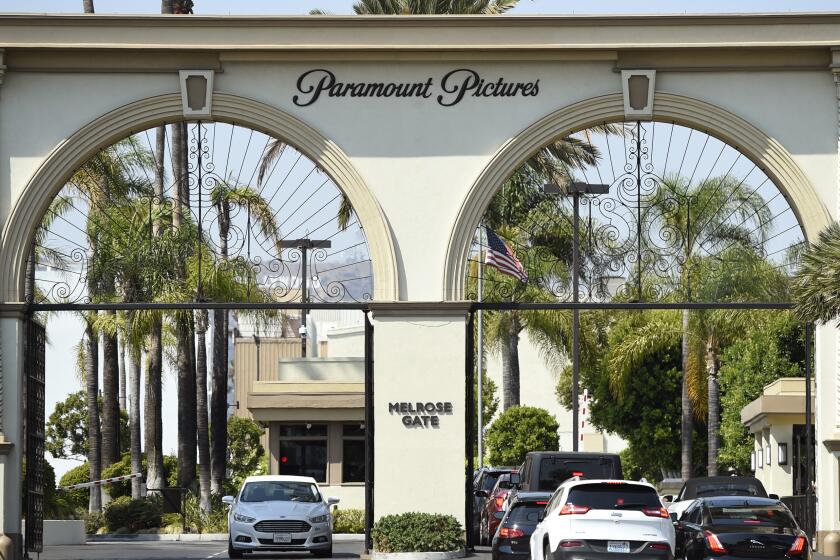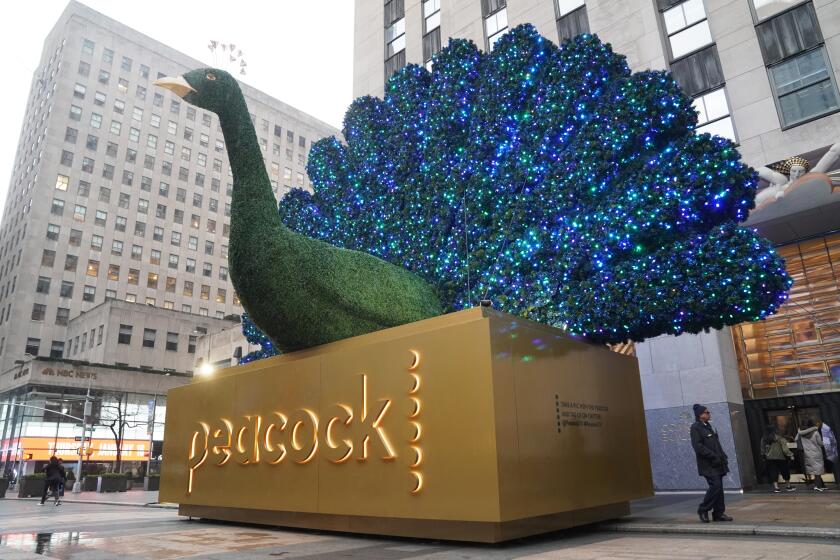
- Share via
While it may sound quaint in 2022, Los Angeles’ original television station — KTLA-TV Channel 5 — was born out of a bet on technology by Paramount Pictures.
In the early 1940s, when theaters and AM radio were king, the Melrose Avenue movie studio enlisted Klaus Landsberg (an immigrant who had fled Nazi Germany) to experiment with the emerging realm of video transmissions. On Jan. 22, 1947, KTLA signed on as the first TV station west of the Mississippi River licensed for commercial broadcasts. Comedian Bob Hope served as emcee for the inaugural telecast, beamed to viewers from a garage on the Paramount lot.
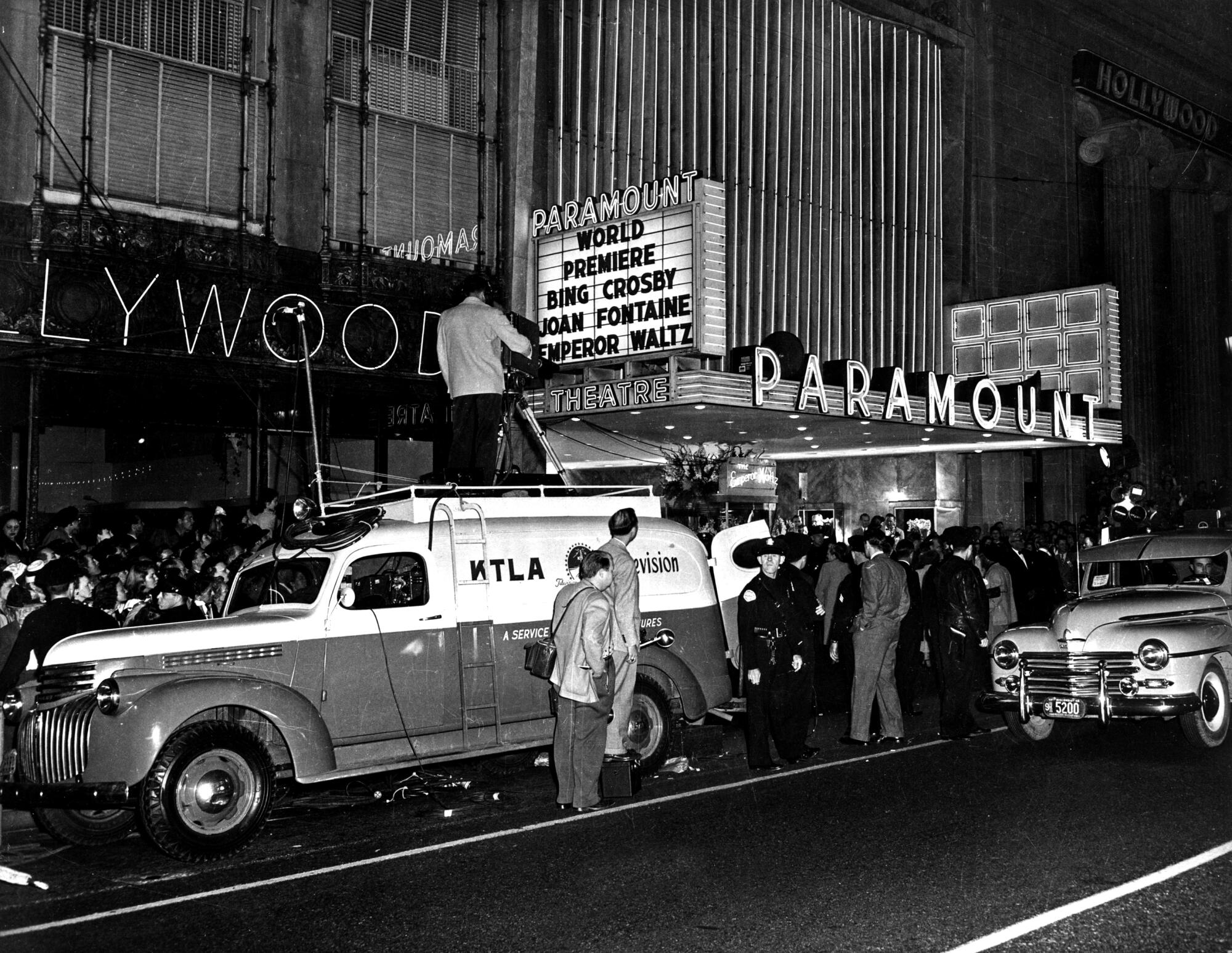
Over the years, the station has punched above its weight, playing an important role in Los Angeles’ history and setting trends that revolutionized TV news. Despite belt-tightening and ownership changes at the station, along with dramatic shifts in viewer behavior over the last decade, KTLA’s newscasts continue to attract hundreds of thousands of viewers. Its coverage of the annual Tournament of Roses Parade still draws millions; Angelenos are particularly partial to the station’s ad-free 8 a.m. telecast.
“We produce over 100 hours of local programming each week — the goal is to reflect the local community,” said Janene Drafs, who joined KTLA as vice president and general manager two years ago. “And the history that we have here is just unmatched.”
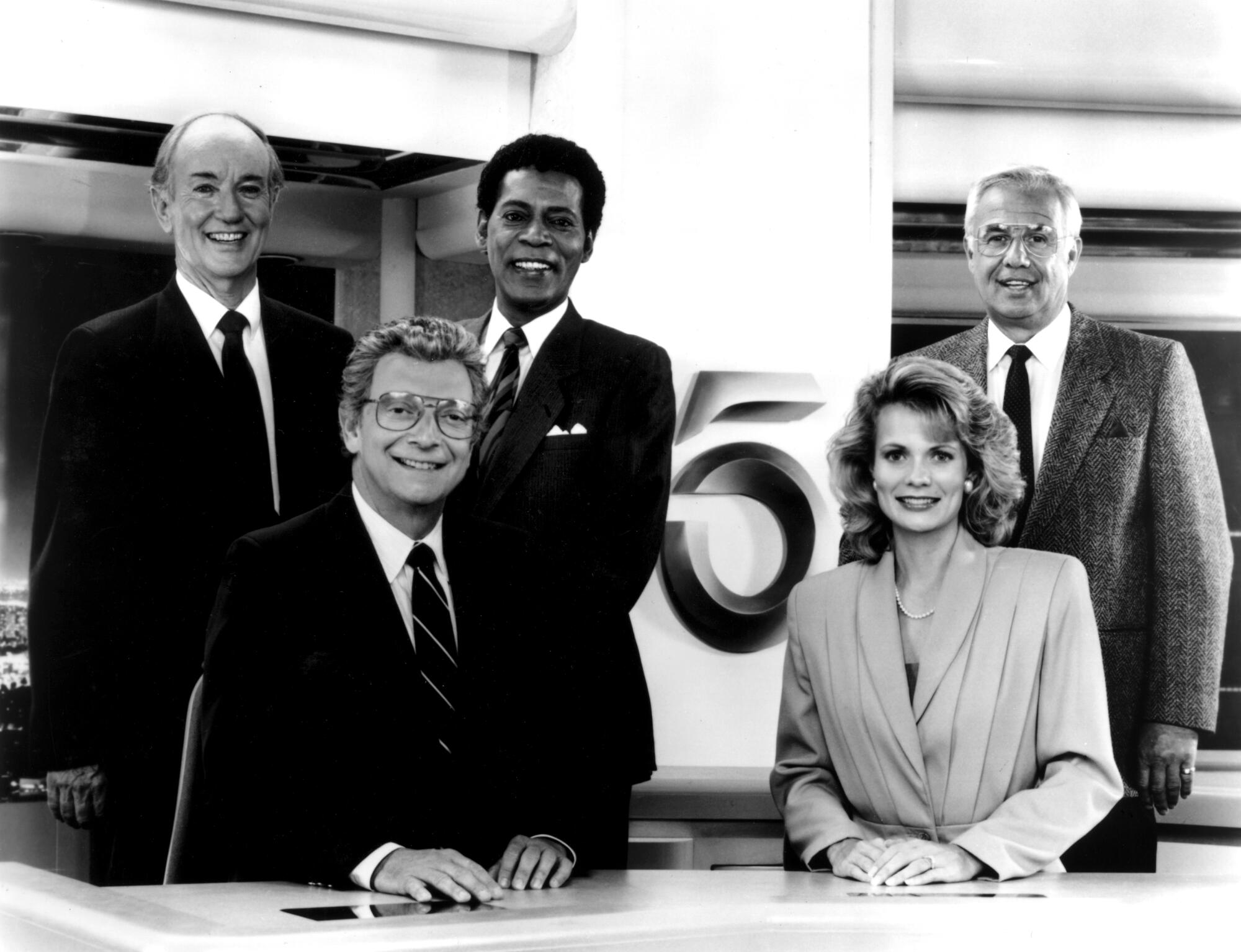
This year, KTLA celebrates its 75th anniversary. Here are some milestones:
Live news pioneer
In 1949, while still in its infancy, KTLA stumbled into what has become a staple of the news industry: live, breaking-news coverage.

The move comes as the New York-based media conglomerate is placing a huge bet on its streaming future with its year-old Paramount+ streaming service.
The station and its viewers experienced the power of live television as KTLA provided more than 27 hours of continuous coverage of the attempted rescue of a 3-year-old girl who had fallen into an abandoned well in San Marino.
At the time, there were only about 20,000 TV sets in use in L.A., but viewers throughout the Southland, and the nation, became transfixed by the televised drama. Landsberg sent camera crews to the field, where they documented the frantic (and ultimately unsuccessful) mission to free Kathy Fiscus, the toddler who was trapped deep inside a well shaft. People flocked to the site to watch, and crowds reportedly formed outside appliance stores that had positioned TV sets in their windows to market the newfangled device.
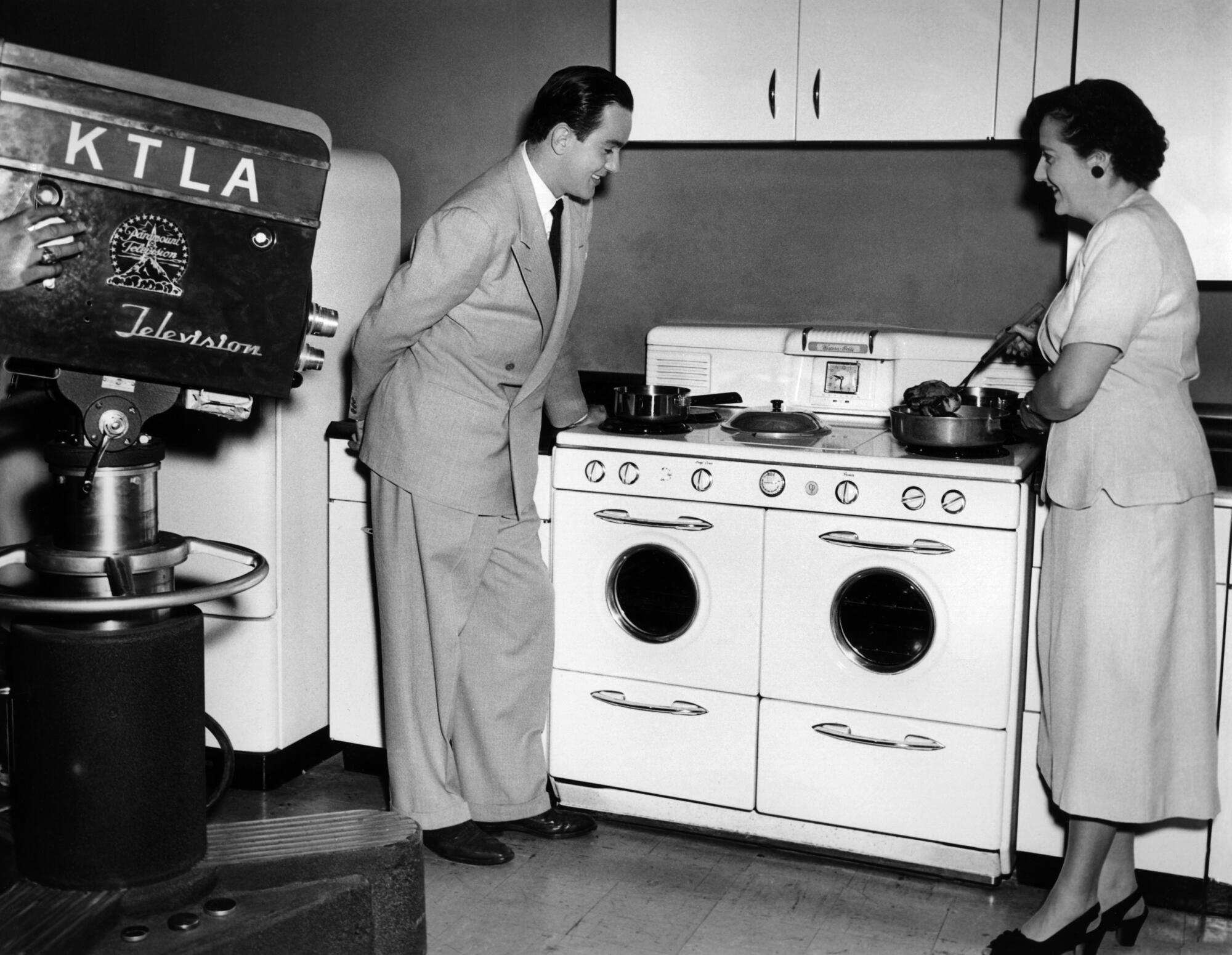
“It was the first time that a television station went to a scene and actually televised the entire event,” the late KTLA newsman Stan Chambers, who gained local prominence for his live reports of the tragedy, told The Times’ Patt Morrison in a 2009 radio interview. “Gradually, [the coverage] evolved into an amazing, emotional event for the whole city. ... We didn’t realize the impact when we started the story.”
In 1952, Landsberg devised a 140-mile link that enabled KTLA to provide live coverage of an atomic bomb test in the Nevada desert.
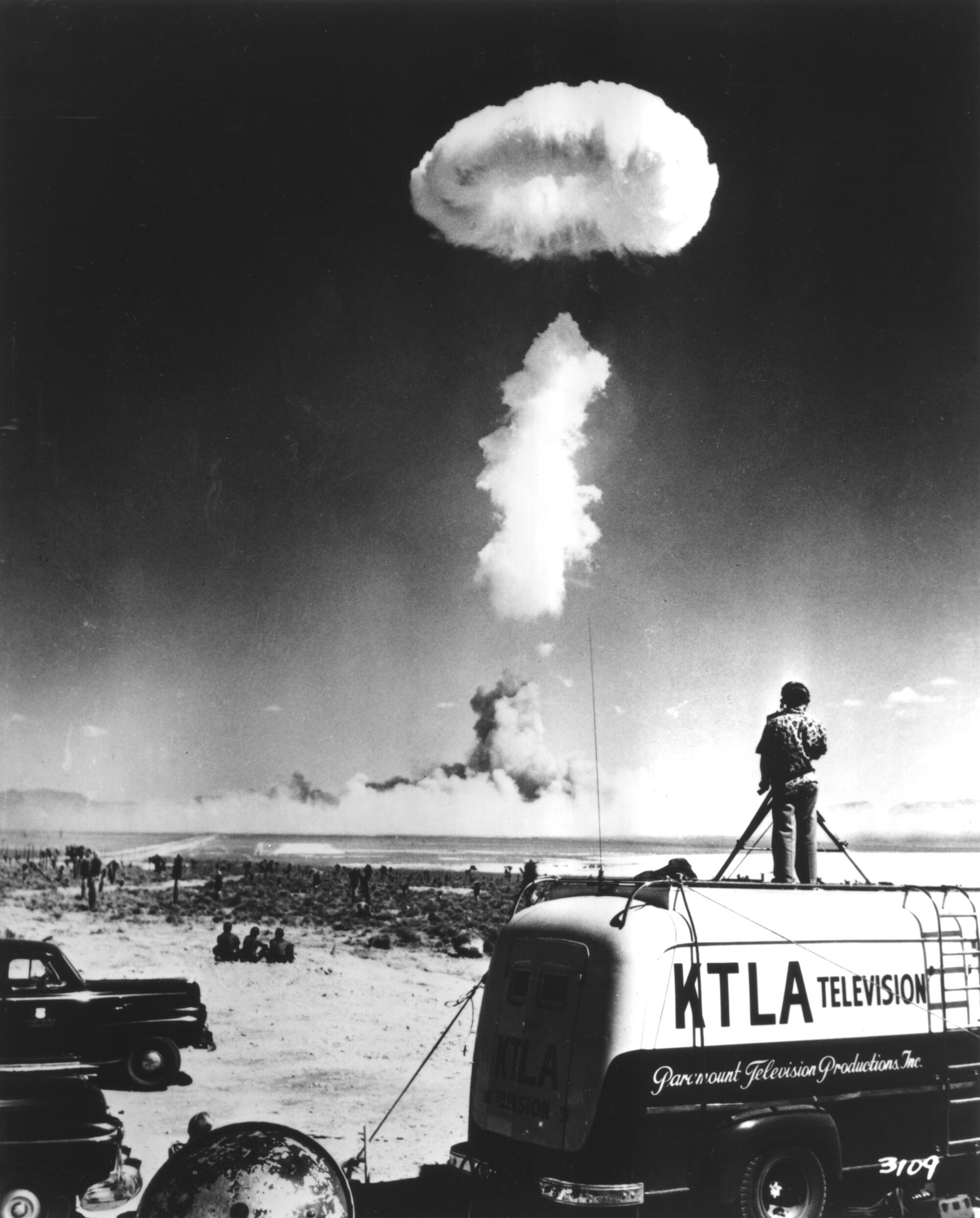
Six years later, KTLA became the first TV station to use a helicopter as a platform to broadcast news. Engineer John Silva turned a Bell helicopter into a “telecopter” with transmitters that could relay signals to KTLA’s transmitter receiver atop Mt. Wilson.
Also in 1958, the station moved to its current address at 5800 Sunset Blvd. It remains the only major TV station to continuously call Hollywood home.
KTLA chronicled the Bel-Air brush fires in 1961, the deadly Baldwin Hills Dam break in 1963 and unrest in Watts in 1965.
A cowboy’s Golden West
Cowboy actor and singer Gene Autry bought the station in 1964, merging it into his growing Golden West Broadcasting.
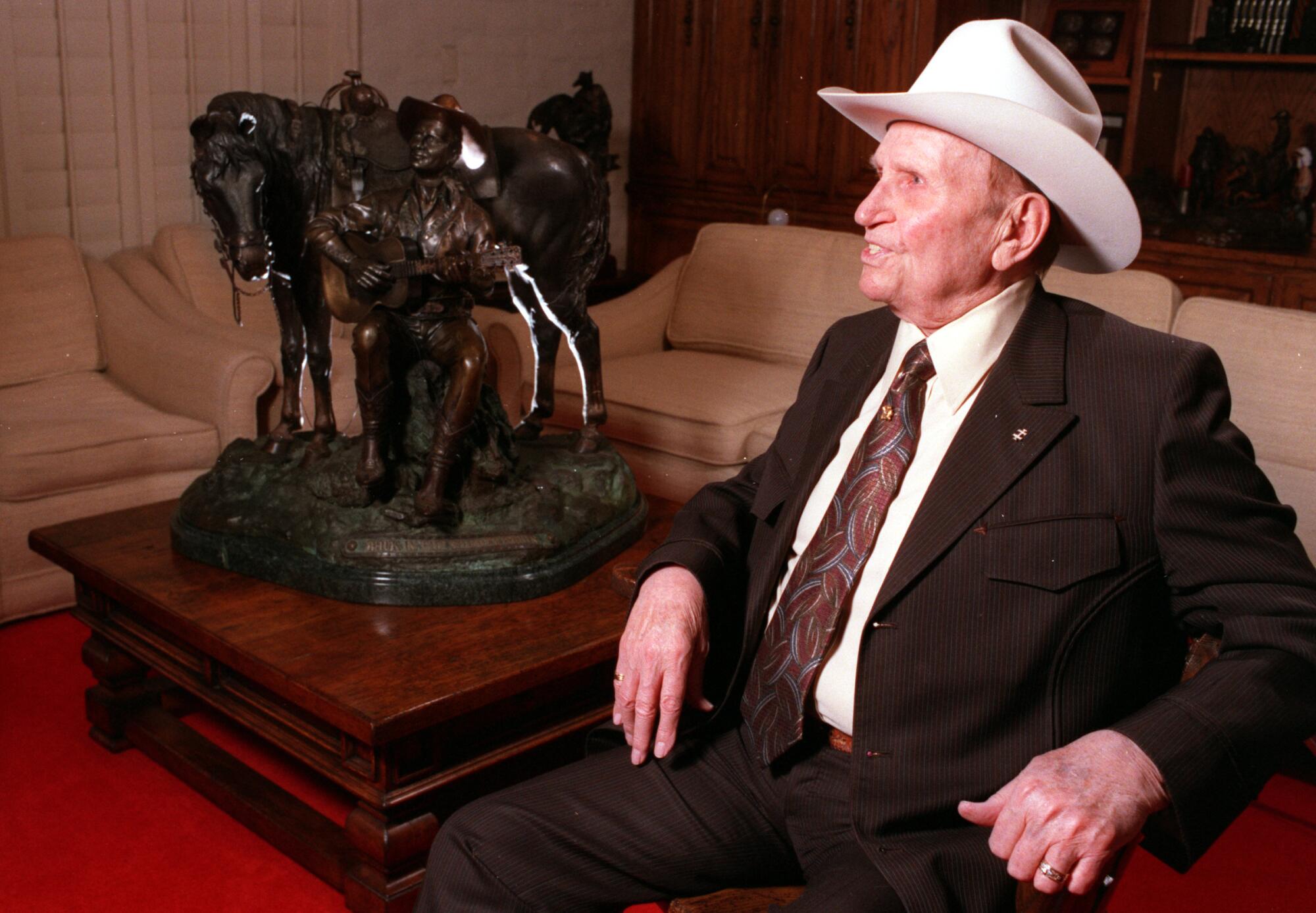
In 1979, KTLA won an Oscar for “Scared Straight!,” a documentary that depicted teenagers on a terror-filled trip inside a prison. The film was also a ratings smash, scoring 1 million viewers. (Unfortunately, KTLA’s Oscar statuette disappeared during a renovation more than a decade ago.)
In 1985, Chicago-based Tribune Broadcasting spent a then-record $510 million to acquire KTLA, then the most profitable independent station in the country.
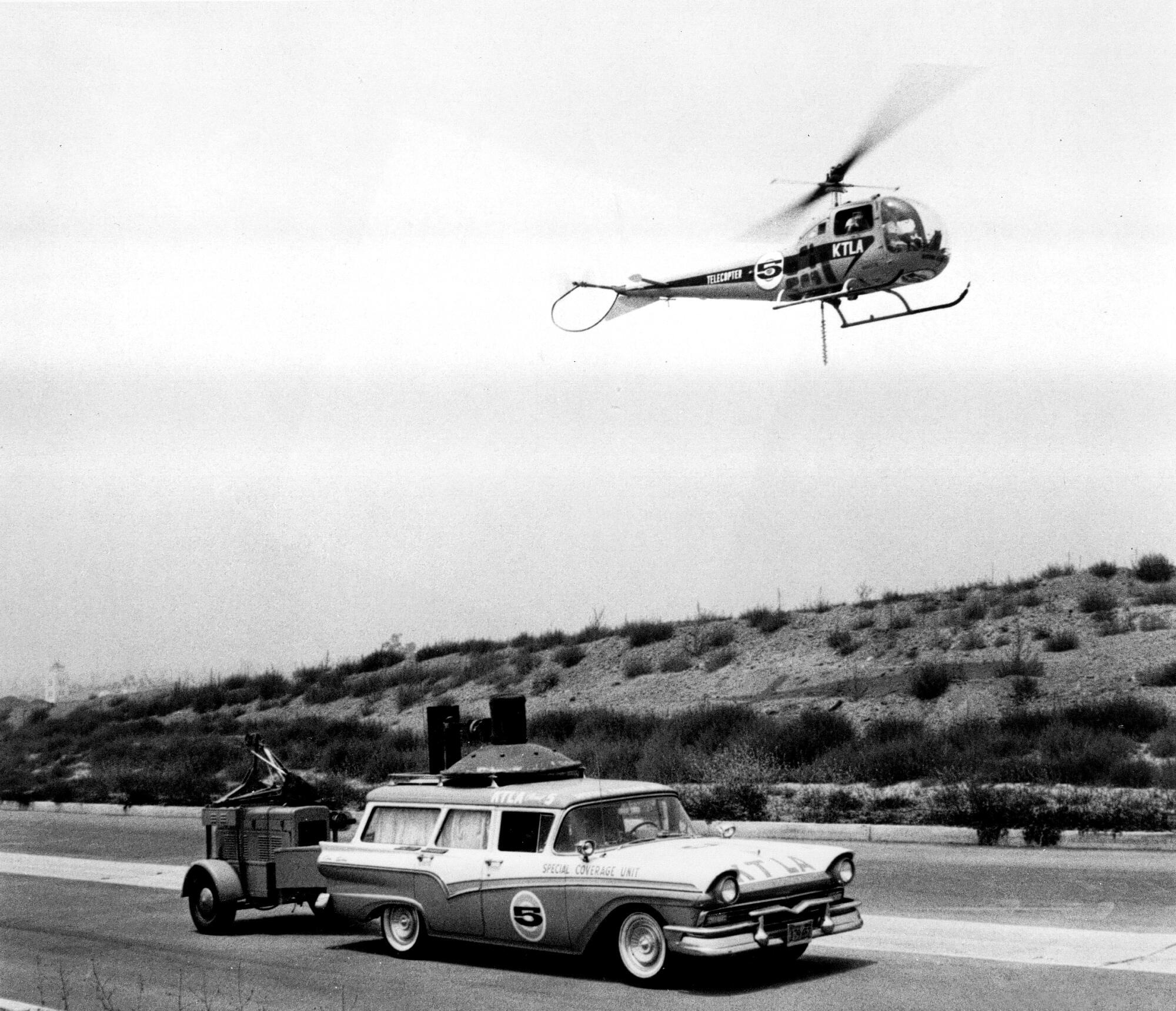
Citizen video and a morning gamble
In 1991, KTLA made a bold decision that changed L.A. history. Amateur photographer George Holliday brought his graphic video of the police beating of motorist Rodney King to the station, and news executives agreed to air it. KTLA was the first station to televise the now-infamous tape, and it later won a prestigious Peabody Award for its handling of the video.
That same year, on July 8, the station scrapped “Brady Bunch” reruns to air a two-hour morning newscast against the networks’ national morning shows. “Our ratings started low, and went down from there,” recalled Chris Reilly, KTLA’s director of production, who has worked at the station since 1990.
However, the “KTLA Morning News” took off weeks later when it tossed out the serious-news playbook, Reilly said. The show switched to a chummy, freewheeling atmosphere that featured co-anchors Carlos Amezcua and Barbara Beck, weatherman Mark Kriski, traffic reporter Jennifer York and reporter Eric Spillman.
Major networks began emulating the chatty format for their morning newscasts.
With help from the 2022 FIFA World Cup, NBCUniversal’s Telemundo will offer Latino-focus programming on its streaming service Peacock.
Not everyone was a fan. In 1993, when KTLA entertainment reporter Sam Rubin jokingly remarked on the show that evening news anchor Hal Fishman once “wore a skirt for a co-anchor job in Spokane,” Fishman threatened to quit, telling The Times that Rubin’s comment was an “outrageous, preposterous slander. ... I am not a cross-dresser and I never had a job in Spokane.” (Rubin reportedly was disciplined.)
The independent station soared in the 1990s, boosted by its morning show, aggressive news coverage and gavel-to-gavel coverage of the O.J. Simpson murder trial. Viewers were riveted, and KTLA established itself as a local news leader.
There was at least one glitch, however.
On June 15, 1995, KTLA interrupted its Simpson trial coverage to air a Dodgers game. Anchor Marta Waller told viewers that a “previous contractual obligation” required the station to switch from the trial. Unfortunately for KTLA, the most dramatic moment of the trial occurred minutes later, as Simpson struggled to pull on the black leather gloves.
The Times’ TV critic Howard Rosenberg mocked the station’s plight in a column, “This Time KTLA Got Stuck With Dodger Gloves.” It didn’t help that the Dodgers got clobbered that day by the Pittsburgh Pirates.
Changing times
KTLA, like other Tribune-owned stations, in 1995 became the backbone for Warner Bros.’ younger-skewing WB television network, and a decade later, the home of the CW.
Over the years, KTLA’s Rose Parade coverage has become a signature event. This past January, KTLA’s live broadcast scored six times higher ratings in L.A. than competing NBC and ABC telecasts.
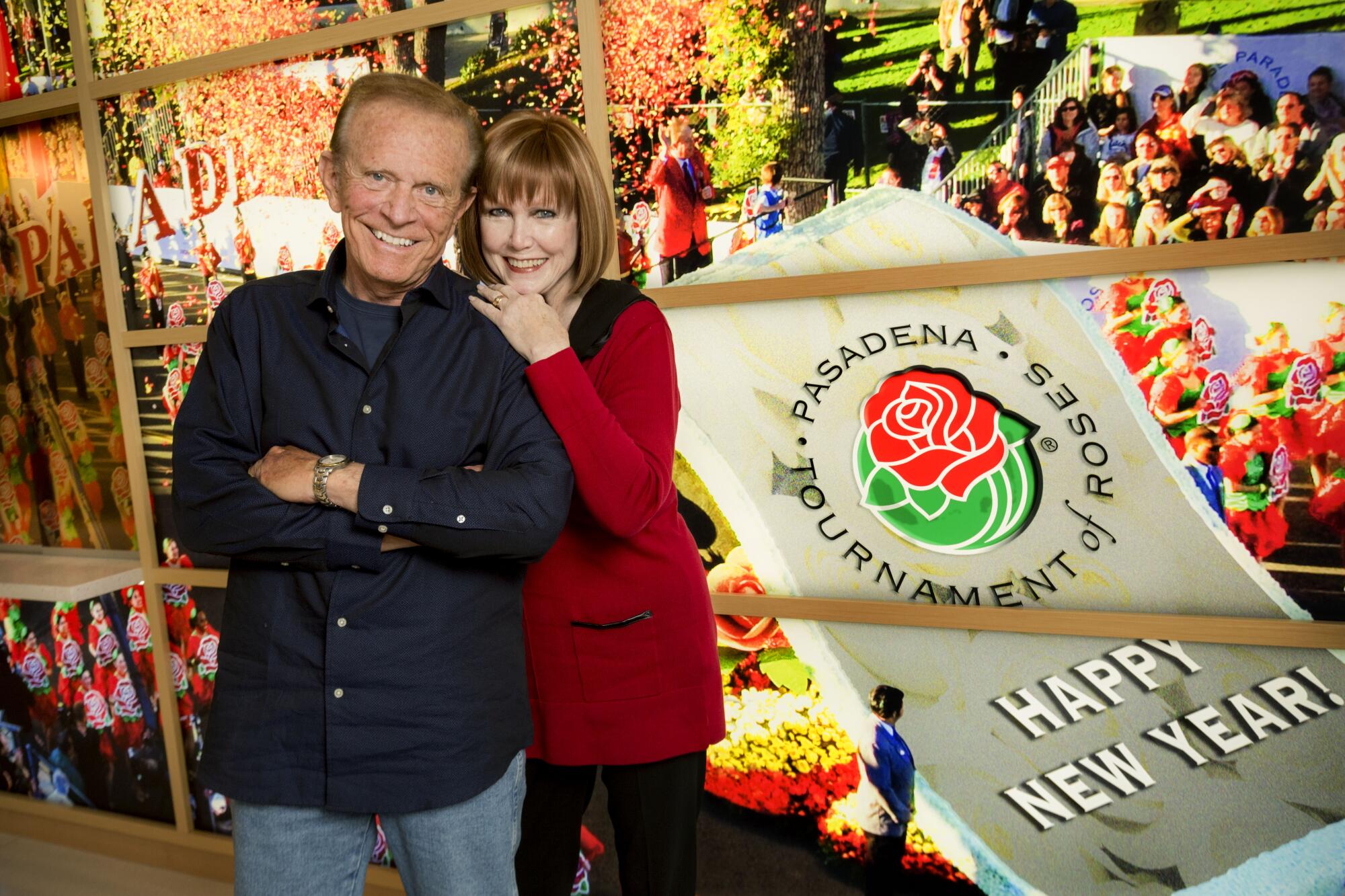
In 2019, three decades of Tribune Media ownership came to an end. An extended corporate bankruptcy, followed by hedge fund ownership, had ushered in years of cost-cutting and turmoil. (From 2000 to 2014, KTLA and The Times were both owned by Tribune Co.)
The station is now owned by one of the nation’s largest TV station owners, Nexstar Media Group, based near Dallas.
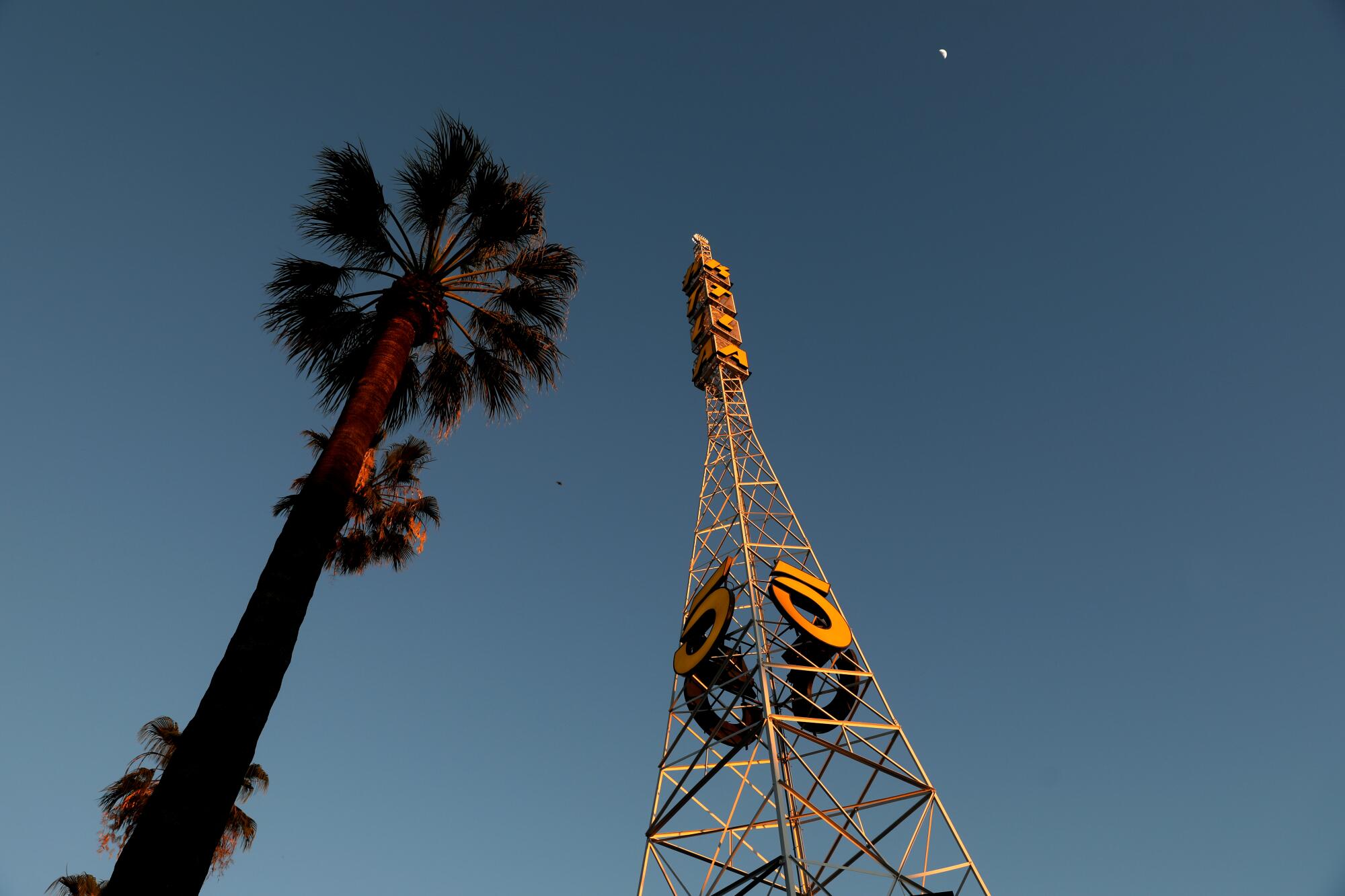
Since Nexstar’s takeover, KTLA has been in rebuilding mode, launching noon and 5 p.m. newscasts. It also debuted a 7 p.m. lifestyle show, “LA Unscripted.” To connect with viewers who don’t watch TV the traditional way, the station launched a digital/streaming app, KTLA+; a digital newscast called “Five Live”; and a talk show, with morning show anchors, called “Off the Clock.”
KTLA now shares its historic Hollywood campus with Netflix, which has changed the TV landscape.
Like other traditional media outlets, the 75-year-old station must adapt to changing times.
“People talk about the cord-cutter, but we have to think about the cord-nevers — the generations that didn’t grow up with a TV on in the background,” said KTLA news director Pete Saiers. “We have to keep KTLA the power brand that it still is today.”
Times staff writer Greg Braxton and researcher Jennifer Arcand contributed to this report.
More to Read
Inside the business of entertainment
The Wide Shot brings you news, analysis and insights on everything from streaming wars to production — and what it all means for the future.
You may occasionally receive promotional content from the Los Angeles Times.
